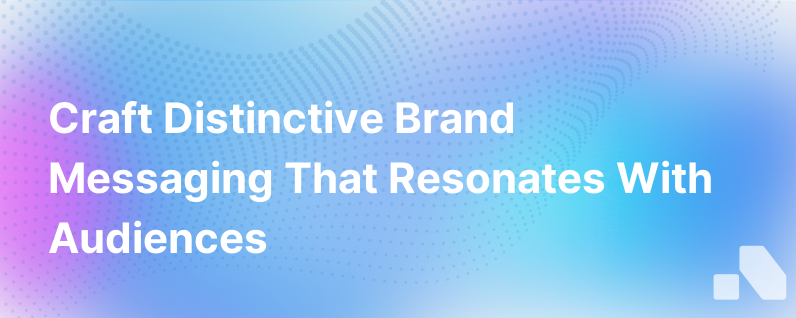
In the fiercely competitive B2B landscape, standing out is non-negotiable. With thousands of businesses vying for buyer attention, a compelling brand message can make the difference. A distinctive brand message can differentiate your brand, resonate with your target audience, and catalyze customer action.
In this article, we will uncover the core principles and proven tactics to create stand-out brand messaging that differentiates your brand.
What is Brand Messaging?
Brand messaging is a narrative that communicates the core aspects of your business and what sets it apart. It establishes your business identity, communicates your value proposition, and creates an emotional bond with your target audience. It goes beyond logo designs and catchy taglines—it embodies your brand's ethos and value proposition and communicates these in a resonant and consistent tone.
Why Does Brand Messaging Matter?
At its essence, brand messaging helps you:
- Stand Out: In today's highly commoditized markets, it’s tough to maintain a competitive edge based solely on features or price. Effective brand messaging distinguishes you from the crowd with unique value propositions.
- Connect Emotionally: People don't make buying decisions purely rationally. Emotion is a key driver, so messaging that evokes positive emotions and resonates on a personal level can trigger action.
- Build Trust: Clear, consistent messaging engenders trust. If your customers know what to expect from you, they're more likely to stick around.
Key Components of Strong Brand Messaging
Here are some core elements needed to construct compelling brand messaging:
- Value Proposition: Your unique offer that meets the needs of your target audience and differentiates you from competitors.
- Brand Promise: The commitment you make to your customers and what they can consistently expect from you.
- Brand Personality: The human traits or characteristics associated with your brand. This could range from professional and authoritative, to friendly and approachable.
- Brand Story: How you communicated the history, vision, and mission of your brand.
How to Create Stand Out Brand Messaging
-
Identify your target audience: Without a deep understanding of your customers, crafting relevant, resonant messaging is impossible. Document your buyer personas, detailing aspects like demographics, pain points, values, and interests.
-
Define your unique value proposition (UVP): Evaluate the intersection between what your customers need and where you excel compared to competitors. Your UVP should highlight unique solutions you provide for your customer's problems.
-
Project your brand personality: Identify your brand's personality traits. Is your brand adventurous, authoritative, or caring? Pinning these traits down will help determine your brand voice and tone.
-
Craft a compelling brand story: A well-told brand story can connect with audiences on a human level. Weave narrative elements into your brand message to guide customers through your brand journey and empathize with their needs.
-
Deliver consistent messaging: Consistency in brand messaging across all channels is key. Be it your website, social media, or brochures, ensure your brand voice remains consistent.
Examples of Companies with Stand Out Brand Messaging
-
Slack: Slack crafted a simple but effective messaging, "Where Work Happens." It's short, clear, and impactful. It conveys what they do and who it's for—anyone who works.
-
Shopify: Shopify's tagline "Let's make you a business" appeals to their target audience of aspiring ecommerce entrepreneurs. It implies a promise of turning a dream into reality while maintaining simplicity and clarity.
-
Aomni: Aomni effectively uses AI to deliver real-time account information, competitive insights, and personalized sales content. “Get actionable insights in 15 minutes. Zero effort required” succinctly communicates Aomni’s value proposition to its target market.
Conclusion
Brands that have a clear, coherent, and compelling brand message significantly increase their chances of standing out in the crowded market. It requires stepping into your customer's shoes and understanding their deepest needs and desires. It also involves a deep dive into what truly differentiates you from the crowd. As you unify these understandings into a clear, concise, compelling message, you will find your brand voice that resonates and engages your target audience effectively. Startups like Aomni have seen this repeated time and time again, translating these efforts into substantial business growth.